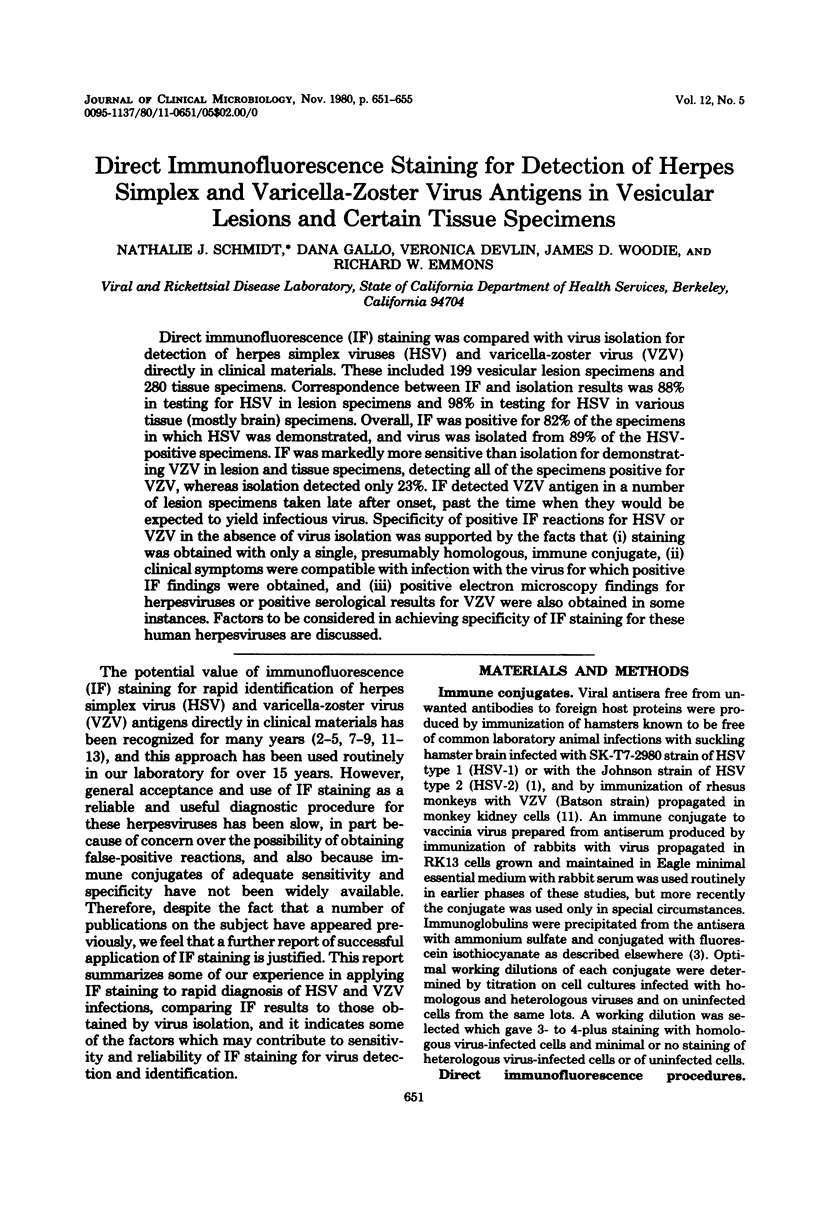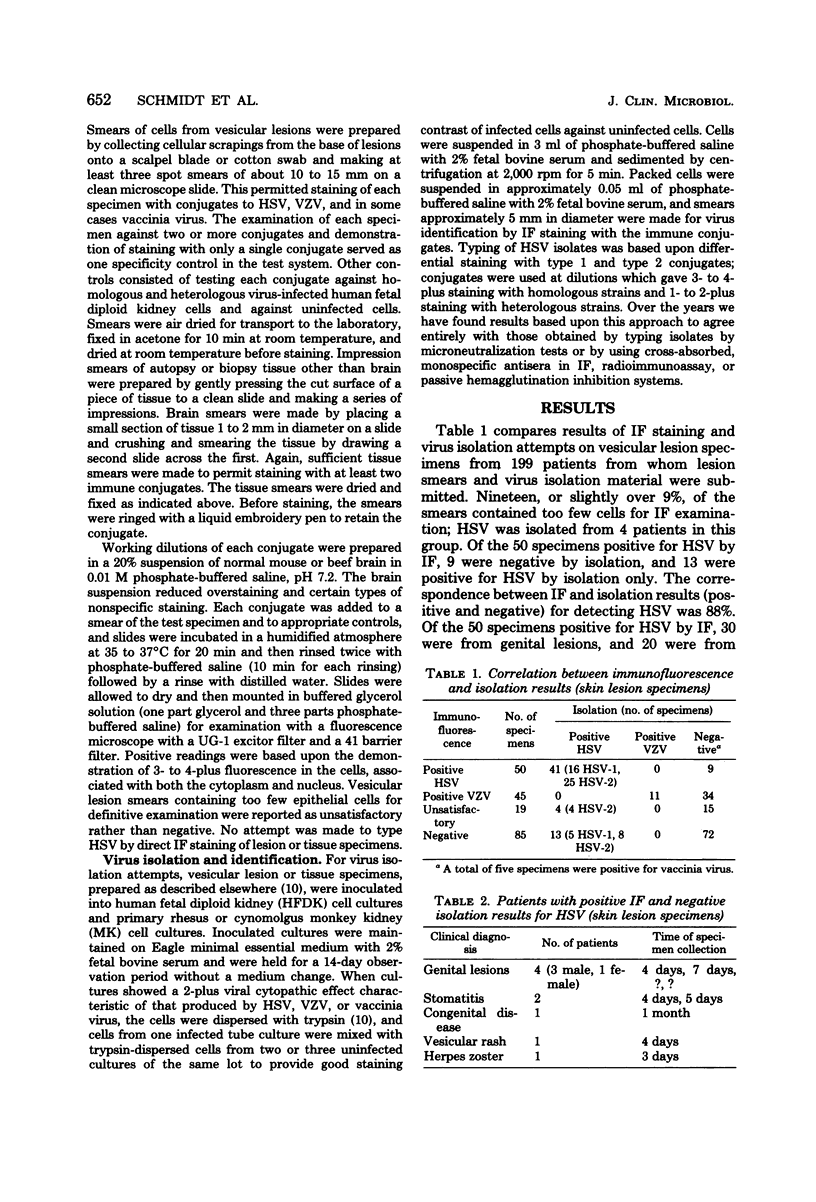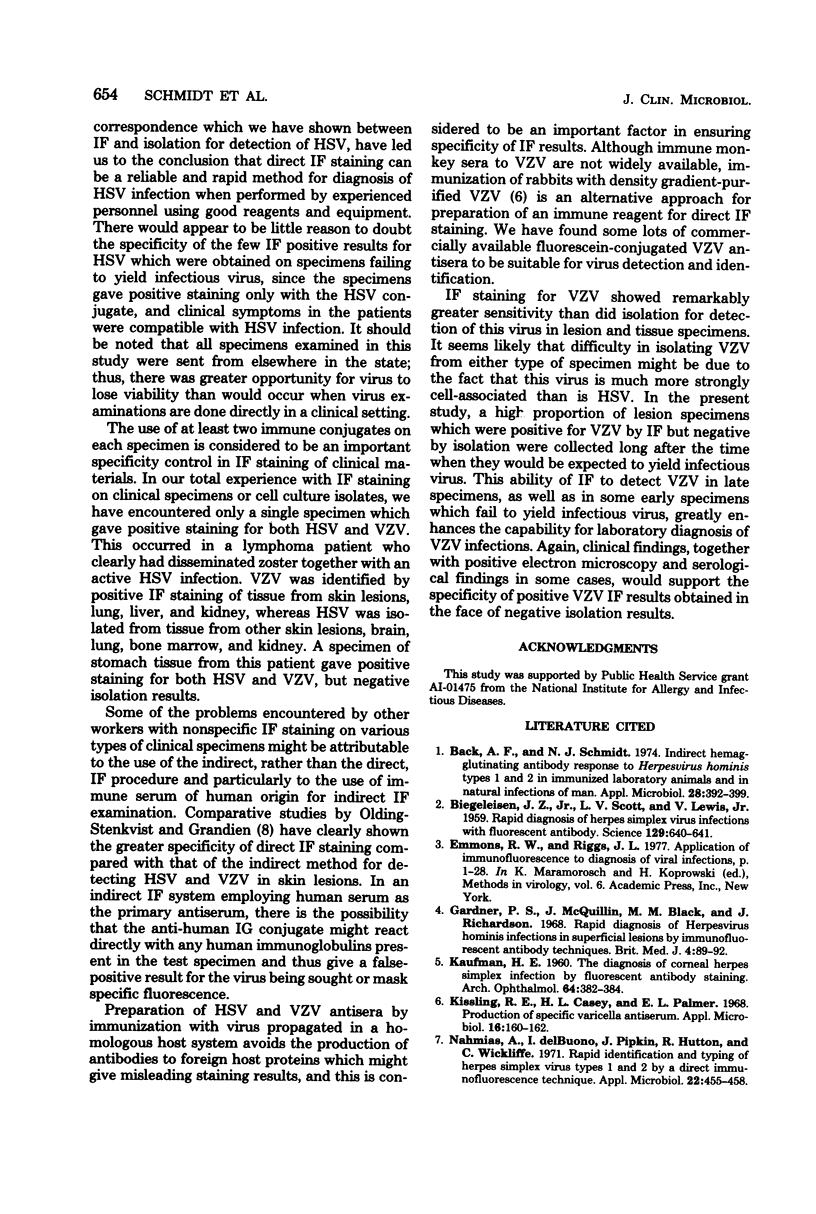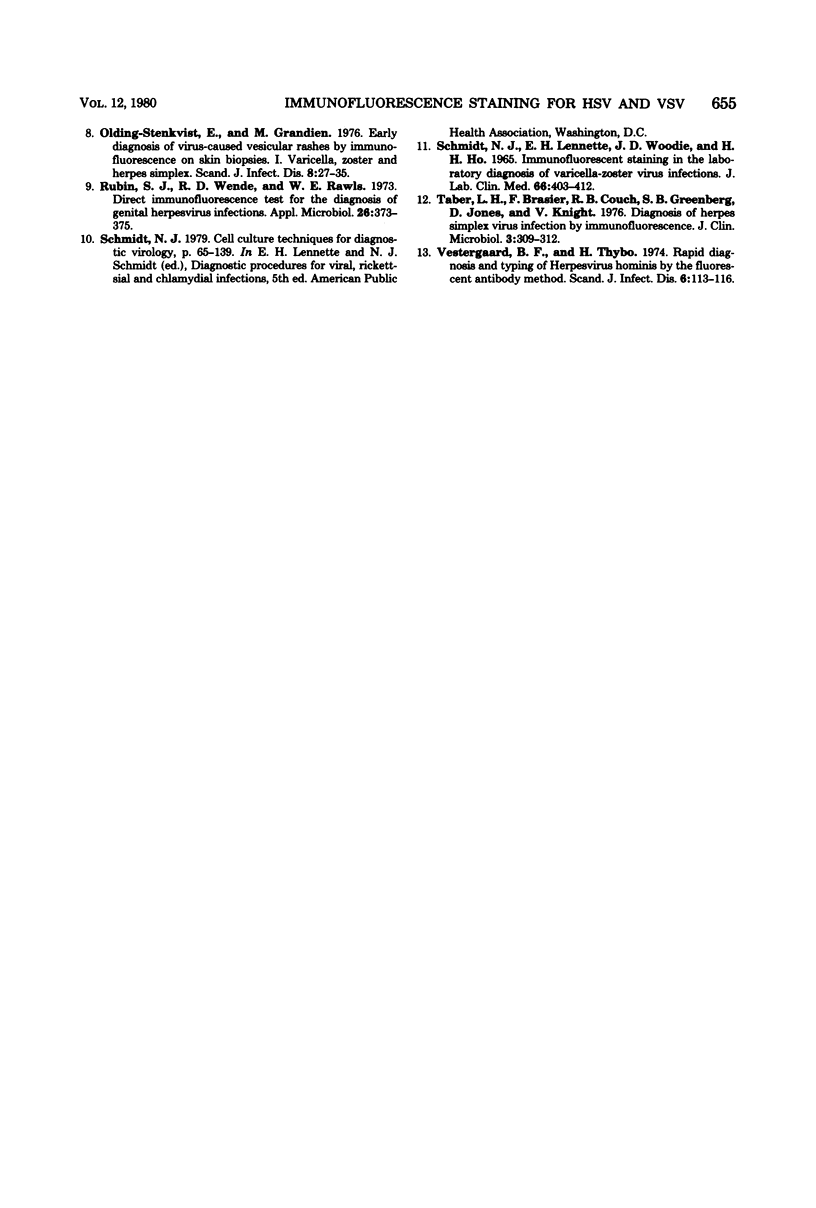Abstract
Direct immunofluorescence (IF) staining was compared with virus isolation for detection of herpes simplex viruses (HSV) and varicella-zoster virus (VZV) directly in clinical materials. These included 199 vesicular lesion specimens and 280 tissue specimens. Correspondence between IF and isolation results was 88% in testing for HSV in lesion specimens and 98% in testing for HSV in various tissue (mostly brain) specimens. Overall, IF was positive for 82% of the specimens in which HSV was demonstrated, and virus was isolated from 89% of the HSV-positive specimens. IF was markedly more sensitive than isolation for demonstrating VZV in lesion and tissue specimens, detecting all of the specimens positive for VZV, whereas isolation detected only 23%. IF detected VZV antigen in a number of lesion specimens taken late after onset, past the time when they would be expected to yield infectious virus. Specificity of positive IF reactions for HSV or VZV in the absence of virus isolation was supported by the facts that (i) staining was obtained with only a single, presumably homologous, immune conjugate, (ii) clinical symptoms were compatible with infection with the virus for which positive IF findings were obtained, and (iii) positive electron microscopy findings for herpesviruses or positive serological results for VZV were also obtained in some instances. Factors to be considered in achieving specificity of IF staining for these human herpesviruses are discussed.
Full text
PDF




Selected References
These references are in PubMed. This may not be the complete list of references from this article.
- BIEGELEISEN J. Z., Jr, SCOTT L. V., LEWIS V., Jr Rapid diagnosis of herpes simplex virus infections with fluorescent antibody. Science. 1959 Mar 6;129(3349):640–641. doi: 10.1126/science.129.3349.640. [DOI] [PubMed] [Google Scholar]
- Back A. F., Schmidt N. J. Indirect hemagglutinating antibody response to Herpesvirus hominis types 1 and 2 in immunized laboratory animals and in natural infections of man. Appl Microbiol. 1974 Sep;28(3):392–399. doi: 10.1128/am.28.3.392-399.1974. [DOI] [PMC free article] [PubMed] [Google Scholar]
- Gardner P. S., McQuillin J., Black M. M., Richardson J. Rapid diagnosis of herpesvirus hominis infections in superficial lesions by immunofluorescent antibody technics. Br Med J. 1968 Oct 12;4(5623):89–92. doi: 10.1136/bmj.4.5623.89. [DOI] [PMC free article] [PubMed] [Google Scholar]
- KAUFMAN H. E. The diagnosis of corneal herpes simplex infection by fluorescent antibody staining. Arch Ophthalmol. 1960 Sep;64:382–384. doi: 10.1001/archopht.1960.01840010384009. [DOI] [PubMed] [Google Scholar]
- Kissling R. E., Casey H. L., Palmer E. L. Production of specific varicella antiserum. Appl Microbiol. 1968 Jan;16(1):160–162. doi: 10.1128/am.16.1.160-162.1968. [DOI] [PMC free article] [PubMed] [Google Scholar]
- Nahmias A., DelBuono I., Pipkin J., Hutton R., Wickliffe C. Rapid identification and typing of herpes simplex virus types 1 and 2 by a direct immunofluorescence technique. Appl Microbiol. 1971 Sep;22(3):455–458. doi: 10.1128/am.22.3.455-458.1971. [DOI] [PMC free article] [PubMed] [Google Scholar]
- Olding-Stenkvist E., Grandien M. Early diagnosis of virus-caused vesicular rashes by immunofluorescence on skin biopsies. I. Varicella, zoster and herpes simplex. Scand J Infect Dis. 1976;8(1):27–35. [PubMed] [Google Scholar]
- Rubin S. J., Wende R. D., Rawls W. E. Direct immunofluorescence test for the diagnosis of genital herpesvirus infections. Appl Microbiol. 1973 Sep;26(3):373–375. doi: 10.1128/am.26.3.373-375.1973. [DOI] [PMC free article] [PubMed] [Google Scholar]
- Schmidt N. J., Lennette E. H., Woodie J. D., Ho H. H. Immunofluorescent staining in the laboratory diagnosis of varicella-zoster virus infections. J Lab Clin Med. 1965 Sep;66(3):403–412. [PubMed] [Google Scholar]
- Taber L. H., Brasier F., Couch R. B., Greenberg S. B., Jones D., Knight V. Diagnosis of herpes simplex virus infection by immunofluorescence. J Clin Microbiol. 1976 Mar;3(3):309–312. doi: 10.1128/jcm.3.3.309-312.1976. [DOI] [PMC free article] [PubMed] [Google Scholar]
- Vestergaard B. F., Thybo H. Rapid diagnosis and typind of herpesvirus hominis by the fluorescent antibody method. Scand J Infect Dis. 1974;6(2):113–116. doi: 10.3109/inf.1974.6.issue-2.03. [DOI] [PubMed] [Google Scholar]


